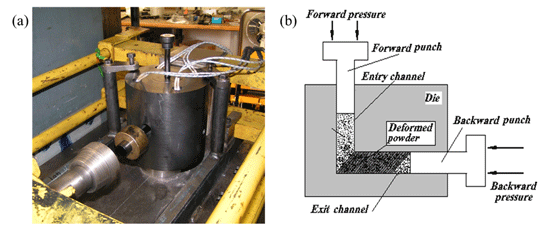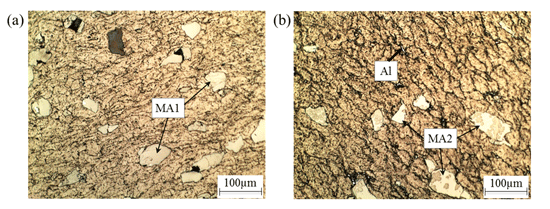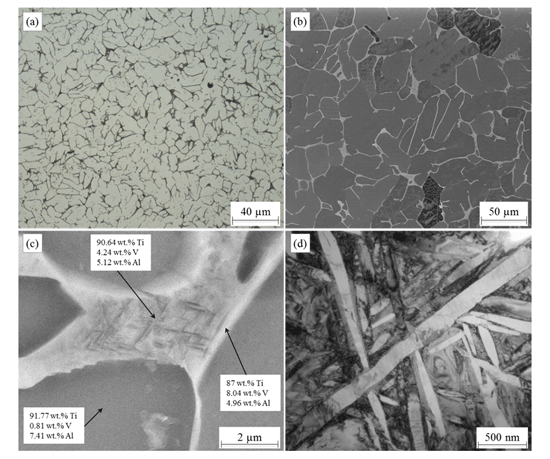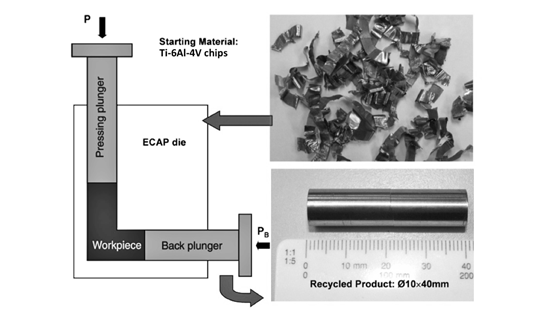Equal Channel Angular Pressing – a cost-effective consolidation route for titanium alloy semi-products?
Whenever the potential use of titanium products is under discussion, it is never long before the issue of cost crops up. This issue is not solely an impediment in establishing PM titanium applications. It is of equal concern for applications where components are machined from wrought titanium alloy semi-products (billet, bar, rod etc.).
Two separate papers reported on novel concepts for the cost-effective production of titanium alloy semi-products, based on the use of a recently introduced severe plastic deformation consolidation route, Equal Channel Angular Pressing (ECAP).
The principle of ECAP is illustrated schematically in Fig. 1. The particulate feedstock is placed in the vertical entry channel with the back pressure punch positioned deep into the exit channel to contain the feedstock material in the vertical channel. As forward pressure in the vertical channel is increased, the high hydrostatic pressure created causes pre-compaction.
When the forward pressure exceeds the pre-set back pressure, shear plastic deformation of the pre-compact begins and material flows into the exit channel against the back pressure punch, Fig. 1 (b).
The work reported by Rimma Lapovok, Monash University, Australia on behalf of her co-authors Christian Haase, Hoi Pang Ng and Yuri Estrin embraced the cost-effectiveness theme by seeking to form Ti-6Al-4V billet material using the “blended elemental” approach, based on CP Ti powder mixed with two different Al-V master alloys.
The two master alloy additions had compositions of Al60V40 (MA1) and Al35V65 (MA2) respectively. The addition MA2 was supplemented with elemental aluminium powder in order to attain the nominal Ti-6Al-4V composition.
It was demonstrated that ECAP at 400°C with applied back pressure of about 210 MPa permits consolidation of the powder mixtures to relative green densities as high as 99%. A combination of temperature, high hydrostatic pressure and plastic shear deformation gave rise to excellent green densities and good compositional homogeneity due to enhanced self-diffusion.
Fig. 2 shows the green microstructures achieved, with relatively homogeneously distributed MA particles, which are hard and brittle and remained sharp-edged after ECAP, whereas the ductile CP Ti particles were highly aligned. The Al particles, used in conjunction with MA2 additions, were found to be finely dispersed.
It was shown that the temperature of sintering required after direct compaction of blended elemental powders can be reduced by 150-250°C, compared with conventionally die-pressed compacts, if compaction is conducted by ECAP with back-pressure (1100-1200°C as compared with 1350°C). This becomes possible due to high green density and the presence of a large number of fast diffusion paths associated with dislocations and grain boundaries.
Sintering at 1100 or 1200°C gave further increases in density from the green density levels (Table 1). Generally, it would be anticipated that the aluminium particles, used with MA2 additions, would melt in sintering, leading to penetration of liquid aluminium into the matrix and leaving additional pores at the original aluminium particle sites. However, the evidence was that, in this work, the fine size of the aluminium particles after ECAP and the high green density resulted in the elimination of this type of porosity.
Sintering at either 1100 or 1200°C resulted in the complete dissolution of the MA particles. When MA1 was used, sintering was above the β-transus temperature and microstructures were created that were characterised by globular and equiaxed α-phase grains with elongated β-phase at the α grain boundaries and accumulated β-phase at α triple junctions, Figs. 3 (a) and (b).
When MA2 and Al were used, the higher oxygen content (>0.4%) may have shifted the β-transus temperature to higher values, causing sintering below the β-transus and small platelets of residual α-phase distributed uniformly in the β-phase (Fig.4).
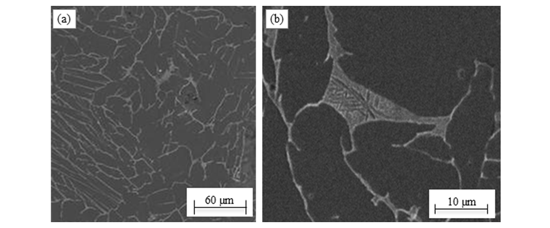
Fig. 4 Compact made with MA2 and Al after sintering at 1100°C for 4 hours. (a) SEM image showing α- and β-phases, (b) higher magnification of β-phase with visible platelet-like α-phase
The mechanical properties of the sintered materials, characterised by hardness measurements and tensile tests, are summarised in Table 2. The general trend for hardness and tensile strength to increase with sintering temperature is valid for both compositions. The strength levels of the alloys, processed by ECAP and sintering, exceeded ASTM standard values by around 150 MPa. This presentation concluded by suggesting that the ECAP-based processing route may offer a significant saving of production cost.
The second paper came from D T McDonald, P Luo and K Xia (University of Melbourne, Australia) and S Palanisamy and M S Dargusch (University of Queensland, Australia) and took a further innovative approach to selection of a cost-effective feedstock for ECAP forming of Ti-6Al-4V rod.
Conventional manufacture of Ti alloy components generates significant quantities of machining chips. To recycle these chips conventionally is very costly and energy-intensive, so the potential for their direct consolidation to a viable semi-product would carry clear benefits.
In this work, Ti-6Al-4V (grade 5, mill annealed condition) machining chips were produced by dry milling and were cleaned in ethanol. These chips were then charged and compacted into an ECAP die (Fig. 5) in a wrapping of stainless steel and graphite for lubrication and ECAP was conducted for 4 passes at 590°C at a speed of 5mm/min with the aid of a back pressure of 50 MPa.
The as-consolidated material possessed a refined microstructure and contained a series of oxide layers associated with the boundary of each machining chip (Fig. 6 a). Higher magnification examination (Fig. 6 b) indicated that certain chip boundaries had been broken down by the severe shear experience during ECAP. This suggests the possibility that increased numbers of passes might induce the breakdown and dispersion of further chip boundaries and the achievement of oxide dispersion strengthening.
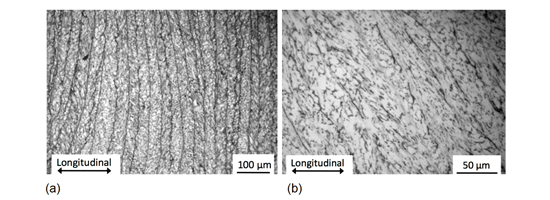
Fig. 6 Microstructure of ECAP-consolidated Ti-6Al-4V machining chips showing chip boundaries (a) and broken chip boundaries (b)
The chip boundaries were observed to dissolve into interstitial solid solution following static annealing, revealing a homogeneous and equiaxed microstructure (Fig 7). A series of static heat treatments within the temperature range 700 to 1000°C, for durations of between 1 and 20 hours, were performed. The effects of these heat treatments on hardness level are shown in Fig. 8.
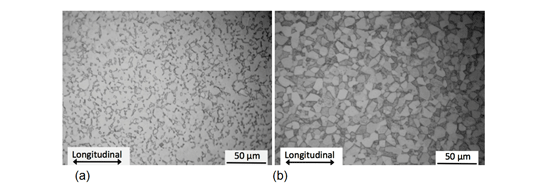
Fig. 7 Microstructures of recycled Ti-6Al-4V (4 passes, 590°C), heat treated for 20 hours at (a) 800°C and (b) 900°C
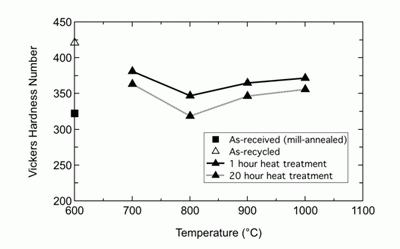
Fig. 8 Vickers hardnesses for Ti-6Al-4V in the as-received, as-recycled and heat-treated conditions.
Hardness is reduced by heat treatment and is consistently lower, at a given treatment temperature, for 20 hour treatments as compared with 1 hour treatments. A minimum hardness exists following a heat treatment at 800°C for 20 hours.
These conditions coincide with the disappearance of the chip boundaries, enabling complete recrystallisation, and the measured hardness for these conditions is, in fact, almost identical to that of the original mill-annealed material.
Further mechanical testing is required to compare the full ranges of properties of the recycled and commercially available materials, but these preliminary results are certainly encouraging.
News | Articles | Market reviews | Search directory | Subscribe to e-newsletter



